Mushrooms
Media
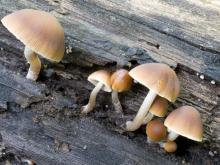
Species Types
Scientific Name
Various species of confusingly similar mushrooms
Description
Like the LGBs (“little gray birds”) of the birdwatchers, this is a catchall category. It includes all the small to medium-sized, hard-to-identify brownish mushroom with spores of all colors. There are many hundreds of species that fit this description!
Media

Species Types
Scientific Name
Urnula craterium
Description
Devil's urns are goblet-shaped, leathery brown cups. They grow in clusters on small to medium-sized decaying branches of hardwoods, especially oaks. Look for them in spring.
Media
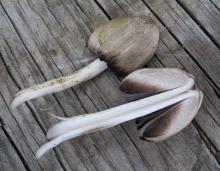
Species Types
Scientific Name
Coprinopsis atramentaria (formerly Coprinus atramentarius)
Description
The alcohol inky has a gray-brown, bell-shaped, radially lined cap and inky gills. It grows in clusters on the ground, usually near rotting or buried wood.
Media

Species Types
Scientific Name
Amanita spp. (about 600 species, worldwide)
Description
This large group of mushrooms accounts for 90 percent of mushroom-related deaths, so every mushroom hunter should be familiar with amanitas. They contain one of the deadliest poisons found in nature!
Media
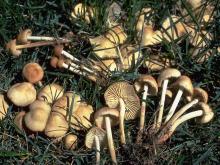
Species Types
Scientific Name
Marasmius oreades
Description
The fairy ring mushroom has a tan to reddish brown, knobbed cap with off-white gills. It grows in grassy areas, lawns, meadows, often in circles called fairy rings.
Media

Species Types
Scientific Name
Pluteus atricapillus (formerly P. cervinus)
Description
The fawn mushroom has a brownish gray cap with whitish to pinkish gills and a whitish stalk. It grows singly or scattered, on dead wood or on the ground over buried wood.
Media
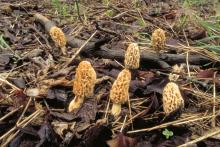
Species Types
Scientific Name
Morchella species
Description
Favorites among Missouri wild edibles, true morels only appear in the spring. They're very hard to see, but that's part of the fun of hunting them. Learn to identify them, and you can enjoy the hunt, too.
Media
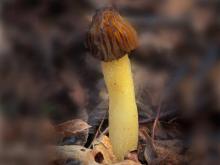
Species Types
Scientific Name
Morchella punctipes (formerly M. semilibera)
Description
The half-free morel is an excellent edible mushroom. It's completely hollow. It has a honeycombed cap with brownish black ridges and yellowish brown pits. The bottom half hangs free from the whitish stalk.
Media

Species Types
Scientific Name
Morchella esculentoides (formerly M. esculenta)
Description
The yellow morel is a choice edible mushroom. It has a honeycombed cap with yellow to grayish to tan ridges and pits. It is completely hollow and grows in the spring.
Media

Species Types
Scientific Name
Morchella angusticeps (formerly M. elata)
Description
The black morel is a prized edible mushroom. It has a honeycombed cap with black to brownish black ridges and yellowish brown pits. It is completely hollow and grows in the spring.
See Also



Media

Species Types
Scientific Name
Monotropa hypopitys
Description
Pinesap is a plant that puts the "wild" in wildflower! It lacks chlorophyll, so its roots connect to fungi underground and absorb nutrients from the fungi.
Media

Species Types
Scientific Name
Cladophora, Pithophora, and Spirogyra spp., and others
Description
Filamentous green algae forms green, cottony masses that are free-floating or attached to rocks, debris, or other plants.
Media

Species Types
Scientific Name
Monotropa uniflora
Description
Indian pipe lacks chlorophyll, so it is white, not green. Below ground, its roots join with fungi that connect to tree roots. This plant, then, takes nourishment indirectly from the trees.
About Mushrooms in Missouri
Mushrooms are a lot like plants, but they lack chlorophyll and have to take nutrients from other materials. Mushrooms are neither plants nor animals. They are in a different kingdom — the fungi. Fungi include the familiar mushroom-forming species, plus the yeasts, molds, smuts, and rusts.
Always be cautious when eating edible mushrooms. Be absolutely sure of the ID, and only eat a small amount the first time you try it to avoid a reaction..





















